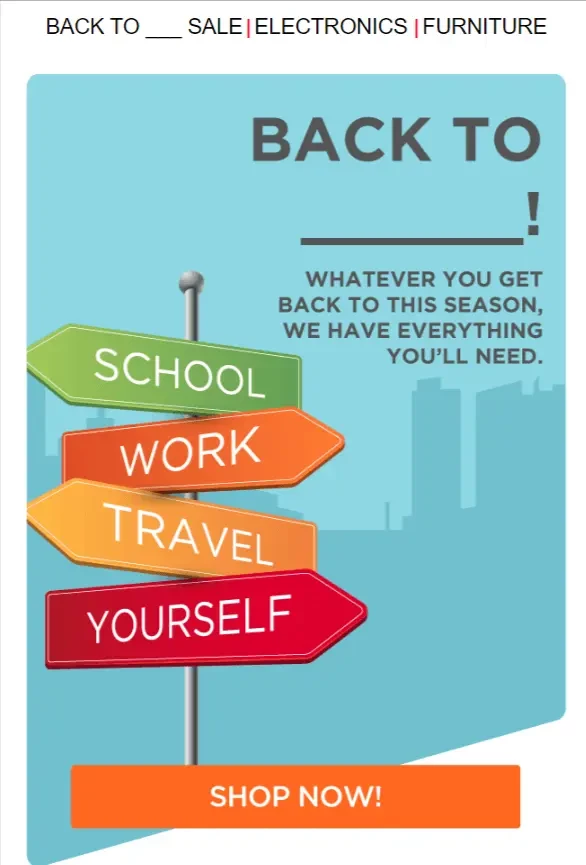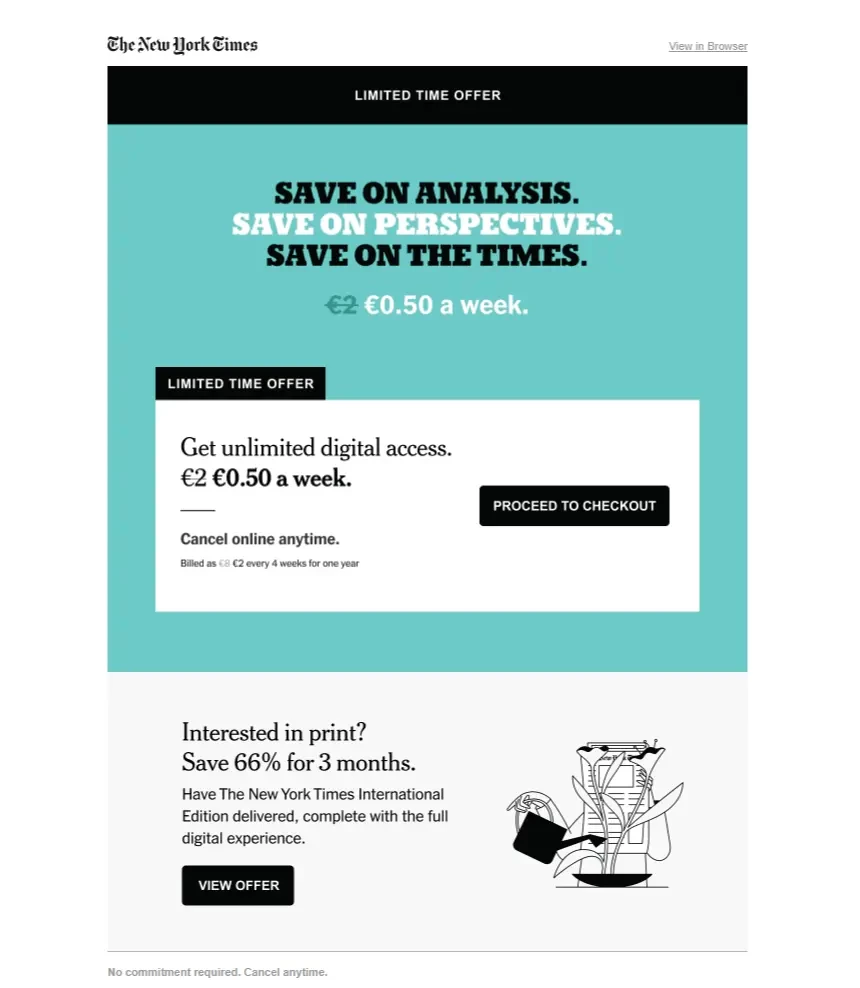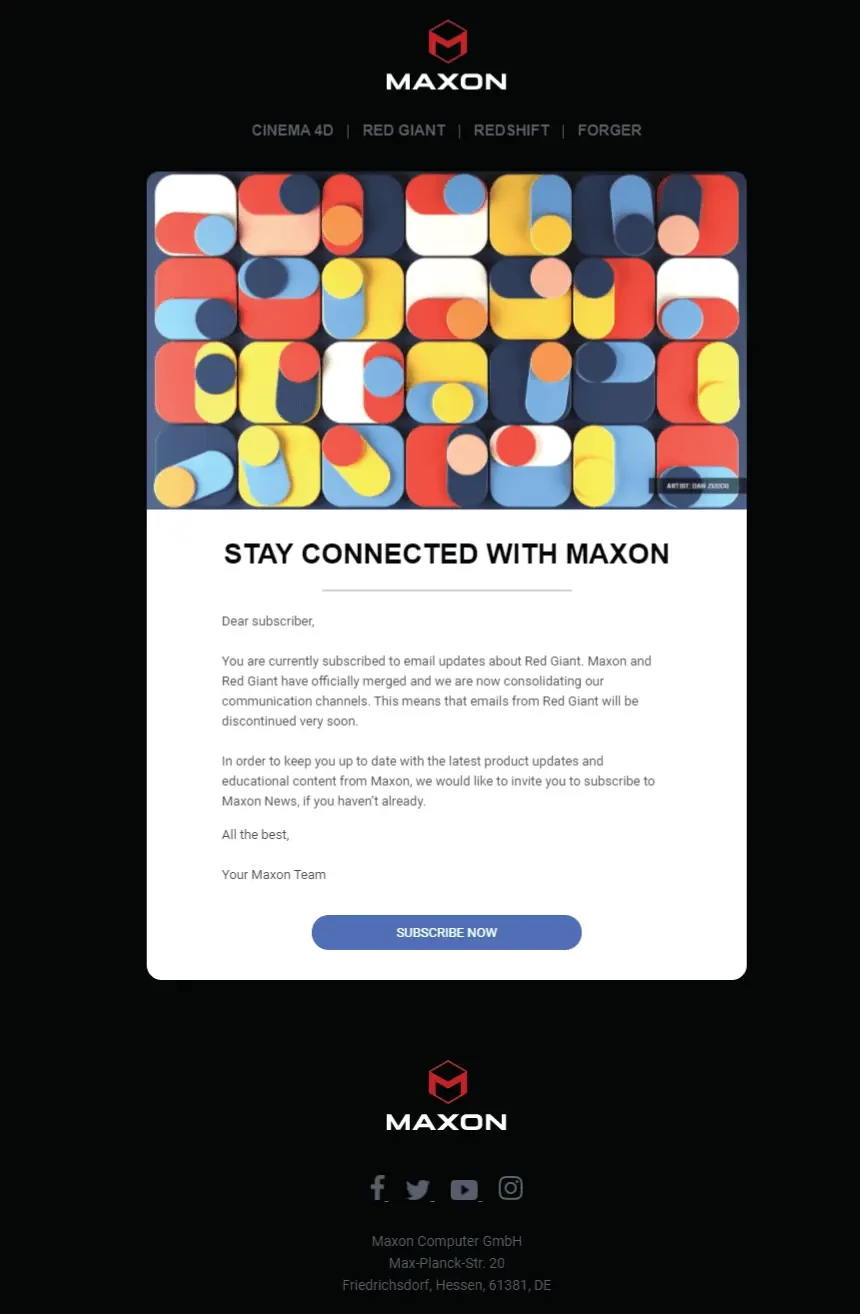Email Blast
An email blast divides opinions. Some people associate it with noisy “spray and pray,” others see a fast way to reach lots of inboxes in minutes. Used with intent, email blasts can deliver time-critical information without overcomplicating your workflow.
What is an Email Blast?
An email blast is a one-time mass email sent to a large audience at the same moment, typically via an email service provider (ESP). It isn’t a multi-step drip campaign or a narrow, targeted email built for a tiny segment. Instead, an email blast broadcasts a single message to many recipients in one go.
You’ll also hear terms like mass email, bulk email, e-blast, and promotional email. All describe essentially the same idea: an email blast favors speed and reach over deep personalization. It’s useful when every recipient needs the same information.
How does an Email Blast Work?
Mechanically, an email blast is simple. You choose an ESP or email marketing software, create one version of the content, and select the list to receive it. The platform handles routing, throttling, and deliverability so mailbox providers don’t misclassify the mass mailing as email spam.
Compared with a regular email campaign, an email blast compresses planning. There is usually one subject line, one send time, and one CTA. You upload or pick your opt-in subscribers, confirm list cleaning, preview the message, and launch. A scheduled email newsletter often goes to a consistent segment; an email blast is a single broadcast sent when timing matters most.
Importantly, a modern email blast isn’t mindless. You can include lightweight email segmentation, minimal personalization (like the first name), and of course, an unsubscribe link to satisfy CAN-SPAM act requirements. The defining feature remains the same message delivered simultaneously to a broad audience.
If you’re wondering how to do an email blast effectively, start by choosing a reliable ESP and ensuring your list is clean and permission-based.
Benefits of Email Blasts
Speed and scale when timing is everything
Email blasts are effective when you need to immediately contact a large number of individuals, such as during service issues, store reopenings, or deadline reminders. The update reaches thousands of inboxes within minutes after it is sent.
Simple production with wide coverage
Because there’s one layout and one copy set to approve, email blasts reduce creative and operational overhead.
Short-term boosts for awareness and sales
Well-timed email blasts can spike traffic and conversions for flash sales, last-chance offers, or expiring coupons. If your goal is immediate reach rather than long-term nurturing, they pull their weight.
Consistent messaging across the board
Policy changes, shipping delays, or safety notices demand consistency. Email blasts keep wording uniform so nobody misses critical details.
Clear metrics for quick decisions
Since an email blast is a discrete send, performance is easy to read: open rate, click-through rate (CTR), conversion rate, bounce rate, and unsubscribe rate. Those email metrics help you decide whether to repeat, adjust, or retire the approach.
How to Send an Email Blast
When done correctly, an email blast may be a very effective tool. Here's a detailed procedure to ensure that your communication is received, read, and responded to.
1) Choose the right platform
Pick an ESP that supports bulk sending, robust deliverability features, and compliance tools. Look for spam filters diagnostics, sender reputation dashboards, templates, and scheduling. Even if you won’t automate today, marketing automation features are handy later.
2) Build or select a clean email list
Send only to opt-in, permission-based subscribers. Eliminate incorrect or inactive email addresses from the list by doing list cleaning, also known as list hygiene. Deliverability is harmed by poor data, which can ruin an email blast before it really gets started.
3) Define goal, audience, and timing
Even broad messages benefit from user segmentation. Decide who in your target audience needs the update and who doesn’t. Choose a send time that aligns with recipient behavior and time zones; consider throttling so the email blast rolls out smoothly.
4) Craft the content
Keep the subject line specific and honest. In the body, explain the “why” quickly, then point to a single call to action (CTA). Write in plain language, break up long paragraphs, and place a visible footer with company details, physical address, support email address, and an easy-to-find unsubscribe link.
5) Design for clarity and mobile
Use a responsive template, accessible fonts, and logical hierarchy. Balance text and images so the message still works with images off. Lightweight design helps the email blast render consistently.
6) Quality-check and test
Verify links and UTM tags, send internal tests, and confirm that any customization tokens are functional. Before sending out the whole email blast, A/B test the subject line or call to action with a small sample of high-stakes emails.
7) Send and monitor
Watch deliverability and engagement. If you see unusual bounces or complaints, pause and investigate. After the send, document lessons to improve future email blasts.
Email Blast Best Practices
Sending emails to everyone at once isn't the goal of email blasting; it's about doing it with consideration. To get the greatest outcomes, keep these best practices in mind.
Segment even when you “blast”
User segmentation isn’t just for complex journeys. If you can slice by lifecycle stage, geography, or purchase category, your email blasts will feel more relevant—and your sender reputation will benefit.
Personalize the basics

Personalized emails don’t have to be fancy. A first-name greeting, local store info, or a hero image tailored to category interest can make email blasts feel considerate without heavy lifting.
Write strong subject lines
Subject lines drive opens. Be clear, front-load value, and pair with preview text that completes the thought. Avoid spammy gimmicks. For any email blast, this is non-negotiable.
Make the CTA obvious

One broadcast, one main action. Use a single primary button with explicit language—“Shop the 24-hour sale,” “Read the update,” “Reserve your seat.” Competing CTAs dilute results, especially in email blasts.
Respect frequency
Sending out too many email blasts wears out subscribers and degrades deliverability. Consider whether an automated sequence or targeted email might accomplish the aim more easily and with less effort.
Keep the list clean
Ongoing list cleaning matters. Suppress chronic non-openers, remove hard bounces, and make preference updates simple. Cleaner lists make email blasts work better and protect the domain's reputation.
Stay compliant, always
Follow the CAN-SPAM Act and regional regulations. Every email blast needs an honest sender name, company address, and a working opt-out. Never send to people who didn’t consent.
Design for deliverability and accessibility
Balance copy and imagery, host assets reliably, and write alt text. Semantic headings and sufficient contrast ensure that everyone can understand your message—an accessibility must for any email blast.
Measure and learn
Don’t stop at opens. Compare CTR, conversion rate, and revenue across email blasts and against targeted email sends. Use findings to tune audience, timing, and creative next time.
When to Use an Email Blast
Urgent announcements
Service outages, shipping interruptions, or product recalls call for immediate clarity. Email blasts get the same message to everyone, fast.
One-time promotions and flash sales
Short windows demand scale. Email blasts can create urgency and spikes in site traffic when you truly have a limited-time offer.
Major company news

Acquisitions, leadership changes, or a rebrand are moments when consistent messaging matters. Email blasts ensure the story is the same for all.
Event reminders and last calls
If registration closes tonight or a webinar starts in an hour, concise reminders via email blasts can tip fence-sitters into action.
Compliance and policy updates
When terms of service or privacy policies change, email blasts help you reach your entire base at once and reduce confusion.
When NOT to Use an Email Blast
Niche or high-value segments
If only a small slice cares, a targeted email will outperform. Save email blasts for broad relevance.
Complex journeys and behavior-based flows
When education or onboarding needs multiple steps, choose a drip campaign or marketing automation sequence. Email blasts aren’t built for progressive teaching.
Sensitive or individualized content
Billing issues, personal account changes, or anything that exposes customer data should never be handled by email blasts.
No permission or unclear consent
If you lack explicit opt-in, don’t send. Email blasts to purchased lists damage deliverability, spike spam complaints, and can violate laws.
Poor data quality
If your lists are stale or full of typos and role accounts, fix that first. Otherwise, email blasts will bounce and harm domain's reputation.
Campaign collisions
If the audience already gets a newsletter or other messages today, an extra email blast may cause fatigue and unsubscribes. Coordinate calendars.
Final Thoughts
The debate around broadcast emails misses the point: they’re a tool. Used for the right reasons, email blasts deliver speed, consistency, and measurable reach. The win is to treat every email blast like a compact broadcast—purposeful, respectful, and tightly executed.
Keep standards high even when moving fast, with clean lists, sharp goals, clear writing, compliant sending, and deliberate follow-up. Done this way, an email marketing blast can be both practical and profitable; a second email marketing blast isn’t always necessary if the first is precise. If you later want deeper nurturing, hand off from the broadcast to marketing automation and a drip campaign that sustains customer engagement.
One more note on outcomes: track economics, not just opens and clicks. Measure ROMI as part of your digital marketing strategy to see whether an email blast actually pays off. And if you sell through an ecommerce platform, tie revenue back to specific email blasts so you can prove impact over time.
In the end, the best marketers don’t swear off email blasts—they use them rarely, thoughtfully, and well. When the message truly needs to go everywhere at once, an email blast can be exactly the right move.
Join Our Blog Newsletter!
Stay updated with our latest email marketing tips, product news and case studies.